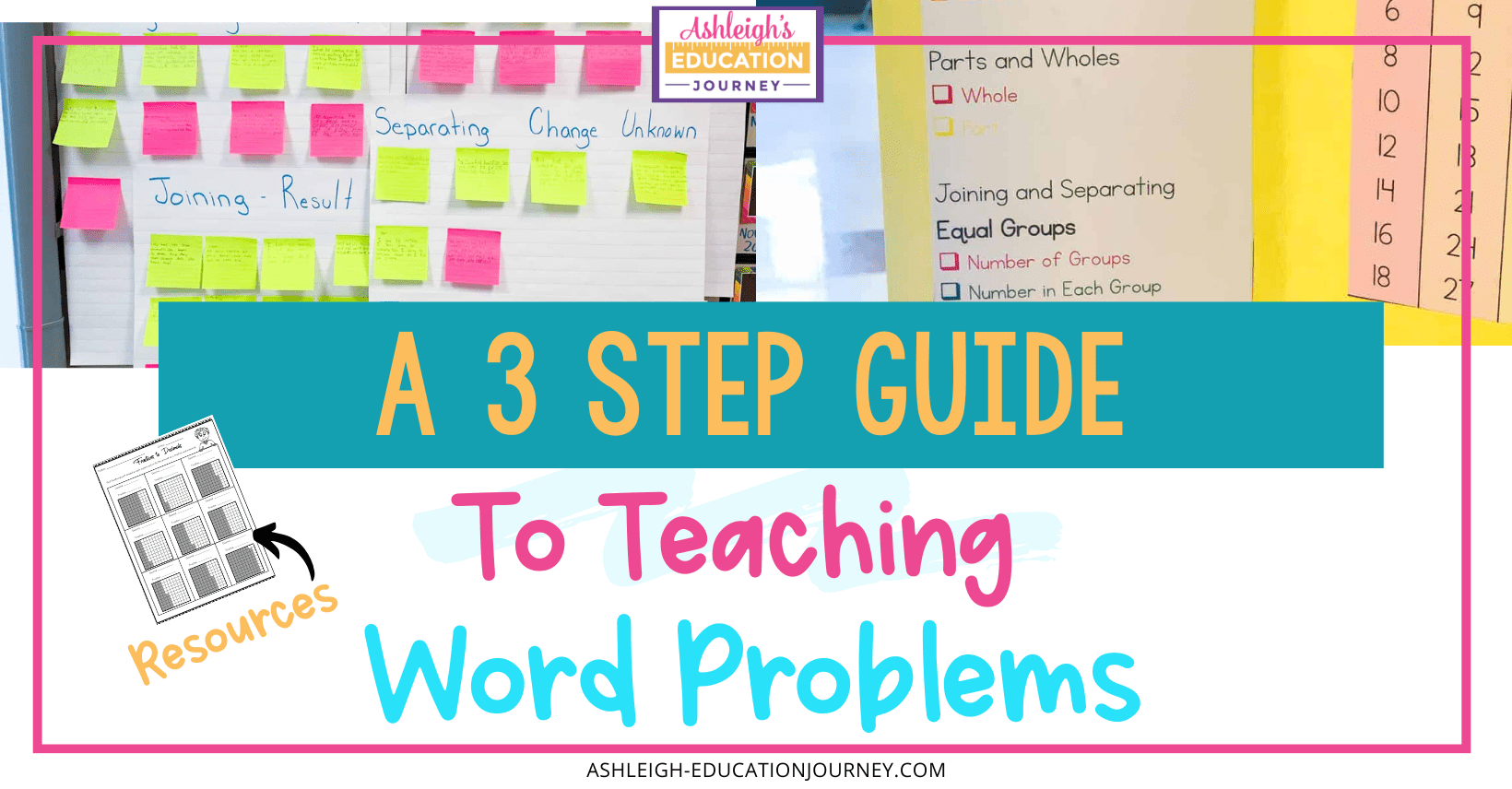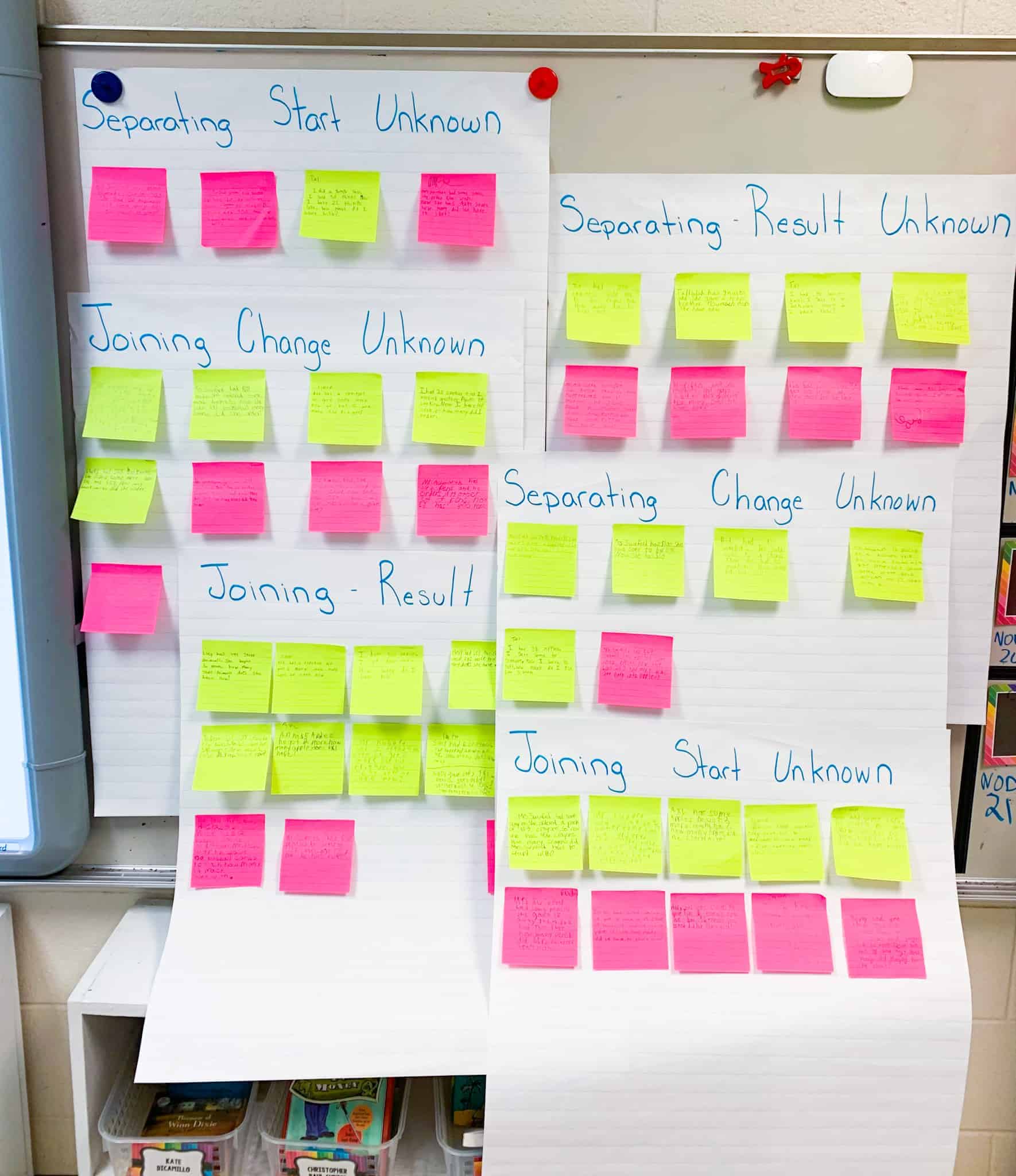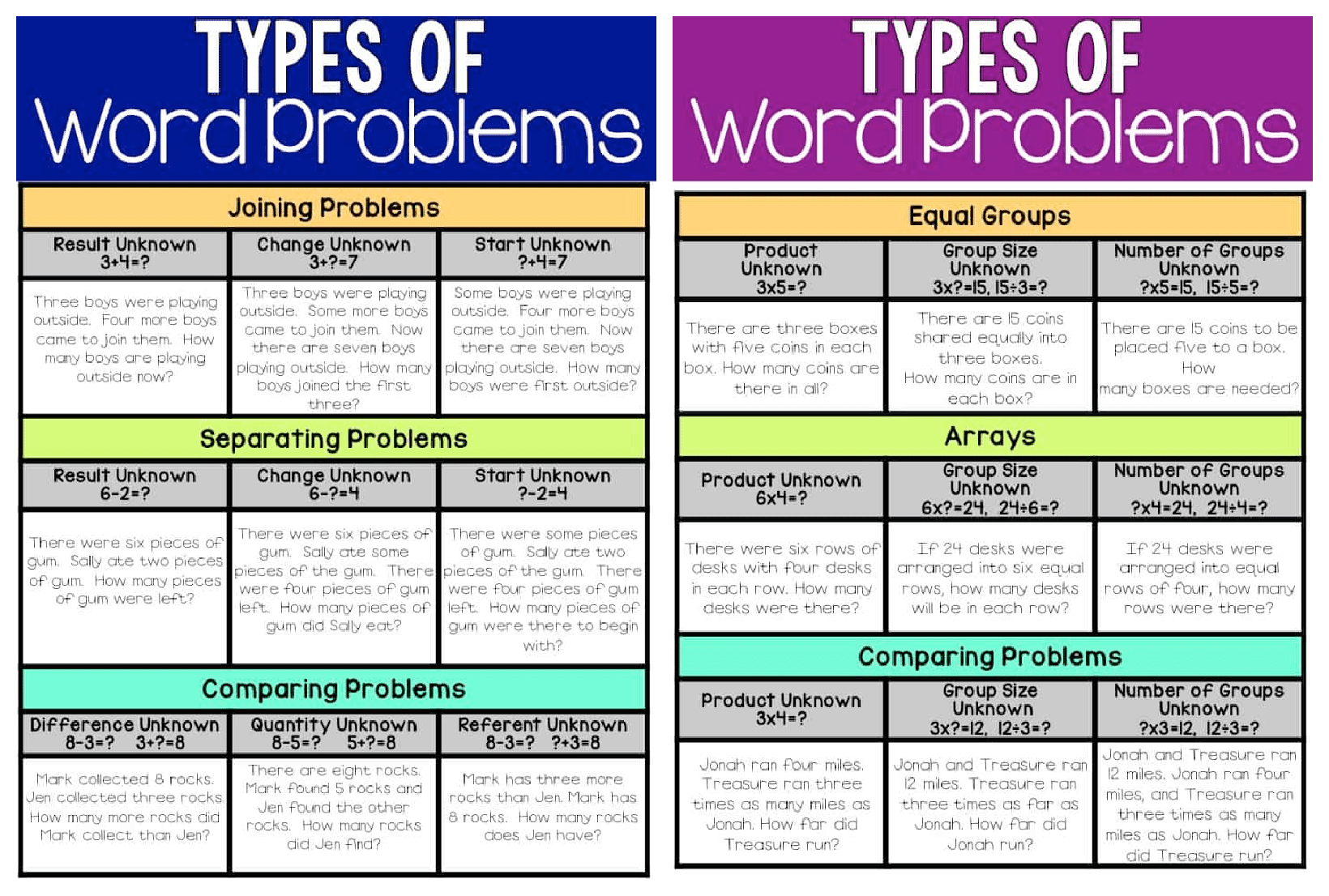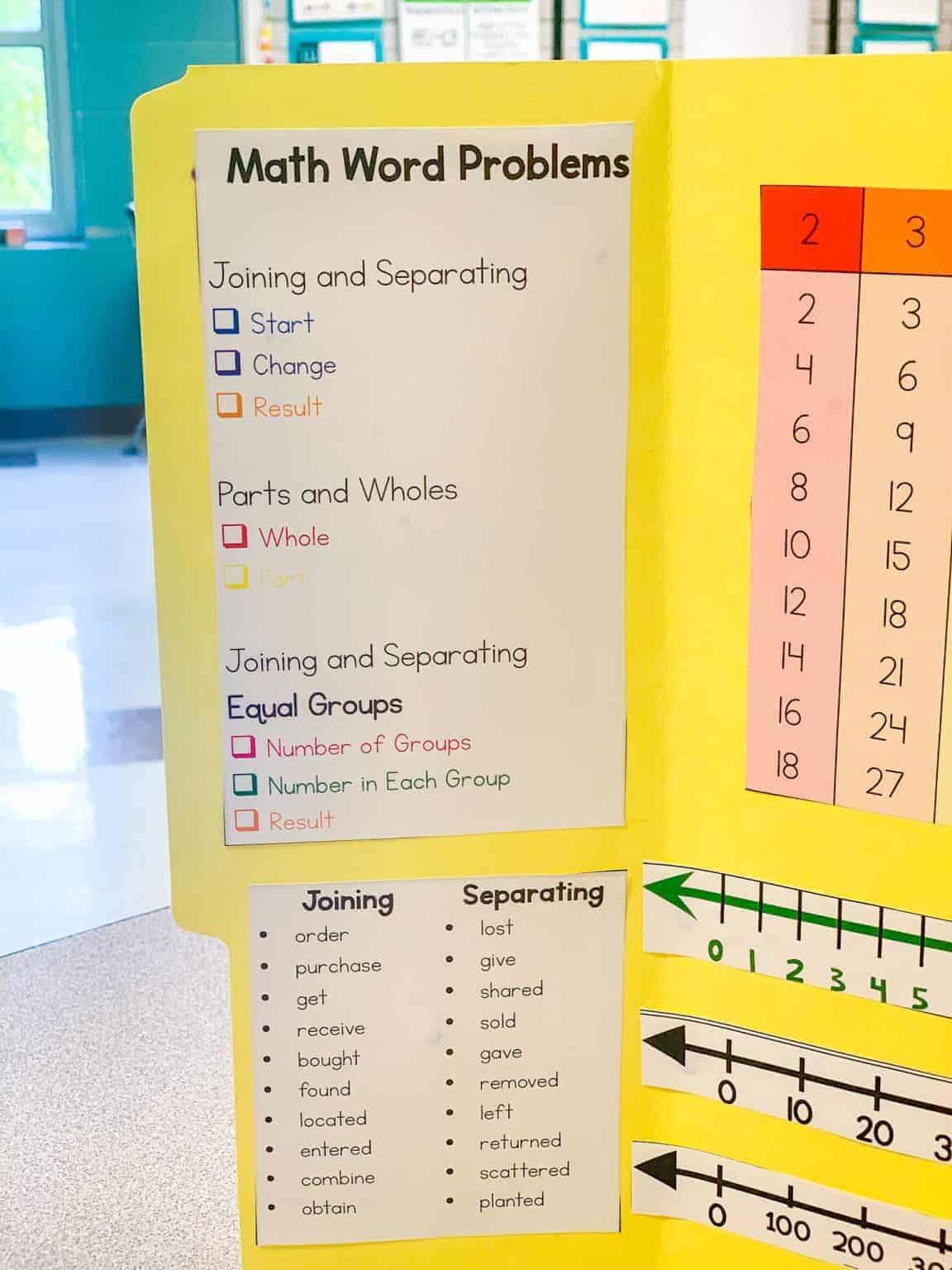
This article continues the blog series on teaching students who have difficulty in math. So far the series as addressed:
- Foundations of Math Instruction
- When Your Students Don’t Get It
- Systematic Instruction
- Mathematical Language
- Math Representations
- Math Facts
To support students, especially those who have difficulty in math, we should provide deliberate word problem instruction. This helps deepen students’ mathematical understanding and supports their capacity to apply mathematical ideas. Students who are at risk in math often have difficulty setting up and solving word problems correctly. The three steps shared below show how to best support these students.
Systematic
We know that there are multiple types of word problems (read more about that here). Students who have difficulty in math best learn how to solve word problems when we introduce one word problem type at a time. When you introduce a new problem type, begin with a story that includes all quantities. This helps students think about what the quantities represent without needing to solve for an unknown. Next, present the same story with a missing quantity. Help students connect the quantities between the story and the word problem so they see how they are the same.
As you teach types of word problems, use role-playing, gestures, drawings, or manipulatives to help students visualize the problem and identify relevant information. This helps students see how the quantities relate to each other.

You can even use numberless word problems to help students focus on the context of the story or situation, without focusing on a solution.
Solution Method
We should teach students a solution method for solving each problem type. To do this you will need to give completed problems as examples and talk through the problem-solving process. As you do this, connect the problem information to the example problem. Discuss each decision you make and ask students guiding questions to engage them as you solve the problem.

Gradually Remove Scaffolding
Once students can recognize and solve the most accessible problems within a type, present word problems of that same type that are less familiar. This helps students broaden their understanding of that problem type. You can gradually move to more nontraditional word problems.
Supports such as graphic organizers, visuals, and other reminders are helpful for students. As they become more comfortable and confident solving word problems, you can gradually fade the use of these supports. This helps prevent students from becoming overly reliant on the scaffolding.

Using these three steps to teach word problems will significantly improve our students’ understanding of word problems. This isn’t a fast process, which means that word problems will need to be embedded throughout your math instruction.
Remember, this post is a small part of a larger blog series!
You can find more posts for supporting students with difficulty in math using the links below.


